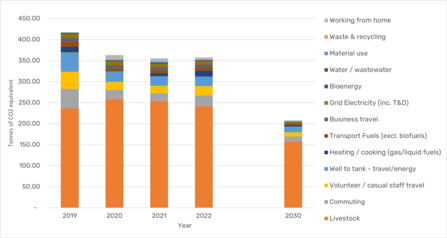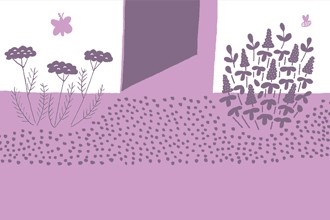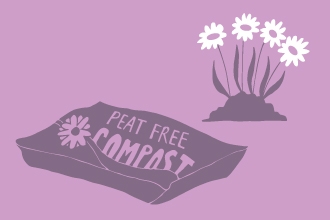We're on a mission to reduce our carbon emissions and become net zero by 2030. Given what we do, we were already well on our way to this when we started. But there's always room for improvement!
Before we get going, though, what is net zero and what are our carbon emissions? At its simplest, net zero means that we're aiming to reduce the Trust's emissions to the smallest amount so that when nature has absorbed and stored what it can, there's none of 'our' carbon left in the atmosphere. We're already helping nature to absorb more by owning nature reserves and working with others to create space for nature. As well as reducing emissions, we want to increase activity to help nature to absorb even more. Just like you, our emissions include travel, energy use, purchases and the like. And, just like you, having the ability to create more space for nature can help some of these emissions to be absorbed.
I've been getting to grips with understanding how much carbon we emit and what we can do to help us get closer to our net zero goal. There are lots of things that we all do that we may not realise emit large amounts of greenhouse gases. Of course, there are the obvious things like petrol and diesel vehicles, non-renewable electricity use and natural gas for cooking and heating our homes. But even small things, from the items we buy to the food we eat, can be a major contributor to our own personal emissions. Making small changes for carbon benefits will often go hand-in-hand with helping wildlife too; using more sustainable materials, food and travel will help minimise our impact on the environment and wildlife. If we all do something, our small adjustments can have big impacts.
Since 2019 we've been accounting for our greenhouse gas emissions from all of the Trust's operations. We've been getting more accurate every year, adding new areas of emissions to get a better picture of our carbon footprint. This is essential if we're to make decisions on the changes needed to reduce them - we need to know which areas to target. Thanks to some investment from trustees and hard work by staff, our emissions are already falling. But there is a long way to go yet. The challenge lies within the conundrum that our biggest emitting activities are also our most essential and, therefore, are difficult to change.




